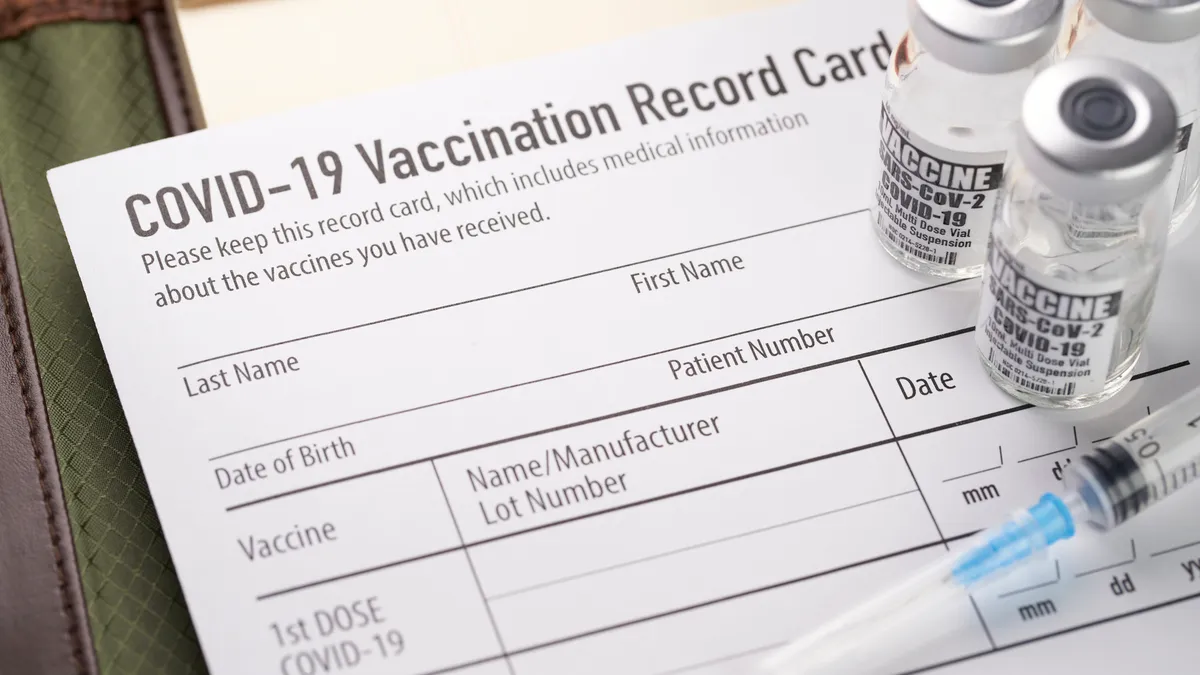Dive Brief:
- The American College Health Association updated its guidance for how higher education institutions can prevent the spread of the coronavirus, with a continued emphasis on COVID-19 vaccines, contact tracing and testing for the spring 2022 term.
- Colleges' best way to curb infections is improving their vaccination rates, ACHA's guidelines say. Adults are recommended to get a booster dose six months after they receive the Pfizer or Moderna vaccines or two months after they receive the Johnson & Johnson vaccine, the organization said.
- Student-facing employees and health professionals at colleges have been subject to long hours, high workloads, stress and burnout. "Long-term investment in workplace health and wellness will be essential to revive and maintain a vibrant workforce," the updated guidelines said.
Dive Insight:
The guidance comes as a new variant, omicron, has been identified in countries including the U.S. Experts say it could be more transmissible than earlier variants, including for people who have been vaccinated. Early reports also suggest that this form of the virus may be less severe than others, though more data is needed.
ACHA released its guidance as fall weather drives more people indoors, where the virus can more easily spread. A surge in new coronavirus cases followed the Thanksgiving holiday, and some are concerned these rising counts are a harbinger of a fifth wave.
Much of the guidance is similar to ACHA's guidelines released for the fall 2021 semester, with a primary focus on increasing vaccination rates and layering other prevention strategies such as contact tracing, coronavirus testing and isolating sick students.
The group recommends that institutions without vaccine mandates create custom programming to increase acceptance of the shots. It notes that booster shots don't have to be the same brand as students' original doses.
ACHA's guidance calls on institutions of higher ed to remain flexible as public health recommendations change.
"IHEs should be prepared to adjust mitigation strategies based on new information on variants, infection rates, hospitalizations, deaths and campus capacity to manage the situation," the guidelines say. And colleges should have clearly defined measures that will trigger the expansion or contraction of coronavirus countermeasures.
The need to test symptomatic people and those with whom they've been in close contact will continue for the spring term, the guidance says. It recommends colleges regularly test asymptomatic individuals, a practice called surveillance testing, especially if their surrounding communities have low vaccination rates, high coronavirus case counts, substantial-to-high transmission rates and frequent community interactions.
Campuses will require different surveillance testing strategies. They should consider requiring pre-arrival testing for students one to three days before their move-in or orientation or conducting entry testing during either of those events. They should also examine whether to target certain populations with surveillance testing, such as athletes, unvaccinated students or those living in student housing.
ACHA's guidance acknowledges that many campus contact-tracing teams have been diminished in the wake of fewer coronavirus cases. But it recommends that colleges have backup plans in the event of surges.
Those could include having on-call contact tracers, training clinic staff as contact tracers and using electronic messaging to speed the process. Having class rosters or seating assignments may also help identify those who've been in contact with infected students.
With flu season underway, healthcare providers could have trouble distinguishing between coronavirus infections and other viruses. ACHA recommends colleges increase flu vaccination rates through education, access or mandates if possible.















